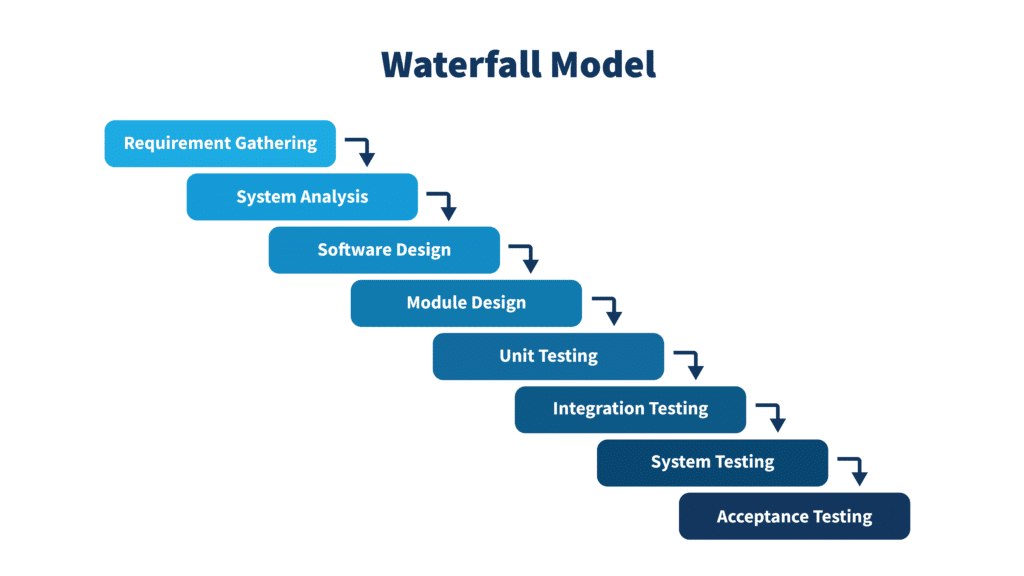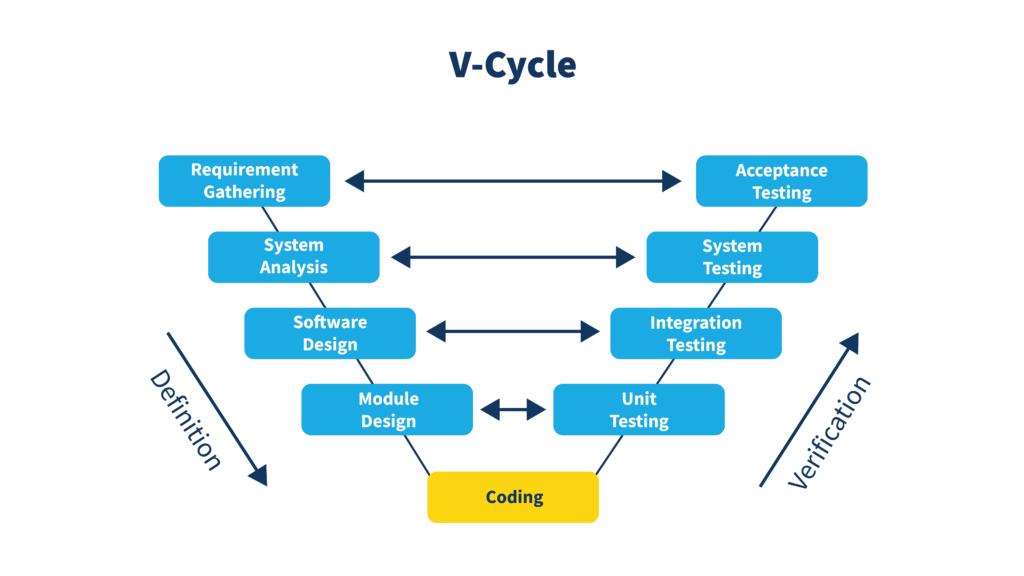Delivering high-quality software doesn’t just require following a process, you have to choose the right one. Every Software Development Lifecycle (SDLC) is unique and should reflect the project’s complexity, goals, and constraints. Also known as the systems development life cycle or software development cycle, the SDLC defines how development teams plan, build, test, and maintain software.
A well-structured SDLC creates the right conditions for development teams to deliver the high quality software on time.
In this article, we’ll explore the SDLC meaning, how the software development lifecycle adapts to different project needs, the most popular SDLC models, and the best practices that ensure quality, predictability, and long-term success.
What is the Software Development Lifecycle (SDLC)?
Before diving into the specifics of a software development lifecycle, let’s define its core purpose.
SDLC Definition and Purpose
The Software Development Lifecycle (SDLC) is a structured process for creating software. At its core, the SDLC breaks a project into distinct stages of development, ensuring that each need (planning, requirement analysis, design, coding, testing, deployment, and maintenance) is handled effectively.
What does SDLC stand for? SDLC means “Software Development Lifecycle”, and sometimes it’s also called the system development life cycle.
The main purpose of the SDLC is to give project managers and software engineers a reliable framework to follow. By applying this process, organizations reduce risks, manage costs, and ensure that the software meets requirements before it reaches production environments.
How to recognize your SLDC process is good
You can tell your software development lifecycle process is effective when:
- Development flows smoothly: teams aren’t blocked or waiting on each other, and dependencies are managed proactively.
- Risks are predictable: teams can anticipate challenges and reduce project risks by following defined SDLC stages.
- Everyone knows their role: each team member is accountable for outcomes and empowered to make decisions within clear boundaries.
- Visibility is effortless: progress is easy to track through KPIs, dashboards, or regular syncs, without heavy reporting overhead.
- Delivery meets quality and reliability expectations: software is released on time and with the expected level of quality and stability thanks to extensive testing built into each stage of the software development lifecycle.
The 7 Core Needs the Software Development Lifecycle can answer
Every software development lifecycle adapts to its project’s goals. It’s not about following fixed steps, but meeting the right needs at the right time.
1. Clear Project Objectives
Successful software project plans start with alignment. Teams define goals, allocate resources, and assess risks early to ensure a shared vision and realistic roadmap.
2. Well-Defined Requirements
Collaboration between stakeholders and engineers is key. Capturing both business and technical requirements avoids scope drift and ensures everyone builds toward the same outcome.
3 – Design & Architecture
Here, software architects and engineers define high-level architecture and detailed design. Considerations like scalability, security, and performance are critical.
4 – Development
This is the coding stage where software engineers build the application. Whether using Agile methodology, Scrum, or another, progress relies on collaboration, automation, and regular validation.
5 – Testing
The testing phase includes unit, integration, system, and security testing such as penetration testing. The objective is to validate performance and deliver high-quality software.
6 – Deployment
Modern development embraces continuous delivery, where building, testing, and releasing are integrated into the same workflow. Guided by a DevOps mindset, teams use automation, CI/CD pipelines, and deployment strategies such as staged rollouts or blue-green deployments to deliver updates quickly, safely, and with minimal disruption.
7 – Maintenance
The software life cycle doesn’t end at deployment. Continuous maintenance, bug fixes, and feature updates keep applications relevant and secure over time.
SDLC Models and Approaches
Not every project follows the SDLC in the same way. Different SDLC models adapt the framework to project needs.
The Waterfall Model (also known as V Cycle)
The Waterfall model follows a linear, sequential process where each phase of the SDLC must be completed before the next begins. It works best for projects with stable requirements and minimal expected changes.

The Spiral Model
The Spiral model combines iteration with risk assessment, making it suitable for complex software projects where requirements may evolve. It balances flexibility with structured progress.
Agile and Scrum
Agile and Scrum have become the go-to approaches for the modern software development process. But more than methods, they represent a mindset and a set of principles that guide how a team shapes its own software development lifecycle. The real measure of success isn’t how strictly ceremonies and rituals are followed, but how consistently the team delivers value and improves with each iteration.
Story Mapping in Application Development
At Witekio, we like to use story mapping to structure development around real user value. Rather than focusing on features, we work from product stories, building personas, defining user journeys, and mapping the full experience. Each development iteration delivers an incremental version of the entire journey, enriched step by step as the product evolves. This approach keeps teams aligned on the user experience from the very first delivery and ensures continuous value with every release.
Best Practices for a Successful Software Development Lifecycle
Even with a strong process, success depends on execution. These best practices help organizations maximize the benefits of the SDLC.
Integrating Security Across All Phases
Security begins at the design phase, where teams analyze potential threats and model attack trees to anticipate risks. This mindset continues through development, deployment, and maintenance, with ongoing vulnerability detection to keep systems resilient as they evolve.
Project Management and Collaboration
Effective project management relies on clear communication and shared understanding between software engineers, project managers, and stakeholders. The goal is for everyone to know where the project stands and what comes next. Tools such as Jira, Azure DevOps, or Trello can help track requirements and provide visibility but should always support collaboration.
Ensuring Quality and Efficiency
- Implement CI/CD pipelines for faster, automated delivery.
- Use automated testing to detect issues early.
- Maintain documentation and monitoring at every stage of the software development lifecycle.
Industry-Specific Adaptations of the SDLC
Different industries adapt the software development lifecycle to meet compliance, safety, and market requirements:
- Medical Devices: Often follow a strict V-cycle model, where detailed requirements drive each step of development. The process is intentionally more rigid to ensure every phase can be traced, validated, and documented for regulatory approval.

- Industrial & Off-Highway: Heavy use of connectivity and telemetry, requiring extensive field testing in real conditions.
Conclusion
The Software Development Lifecycle (SDLC) provides a structured, proven approach to building reliable, secure, and efficient software. By focusing on the key needs it addresses, selecting the right model, and applying best practices, development teams can deliver high-quality software that meets business goals while minimizing risks.
Whether you follow the Waterfall model, the Spiral model, or Agile and Scrum, the most effective SDLC is the one that adapts to your teams, supporting their strengths, ways of working, and helping them perform at their best, rather than constraining them.


